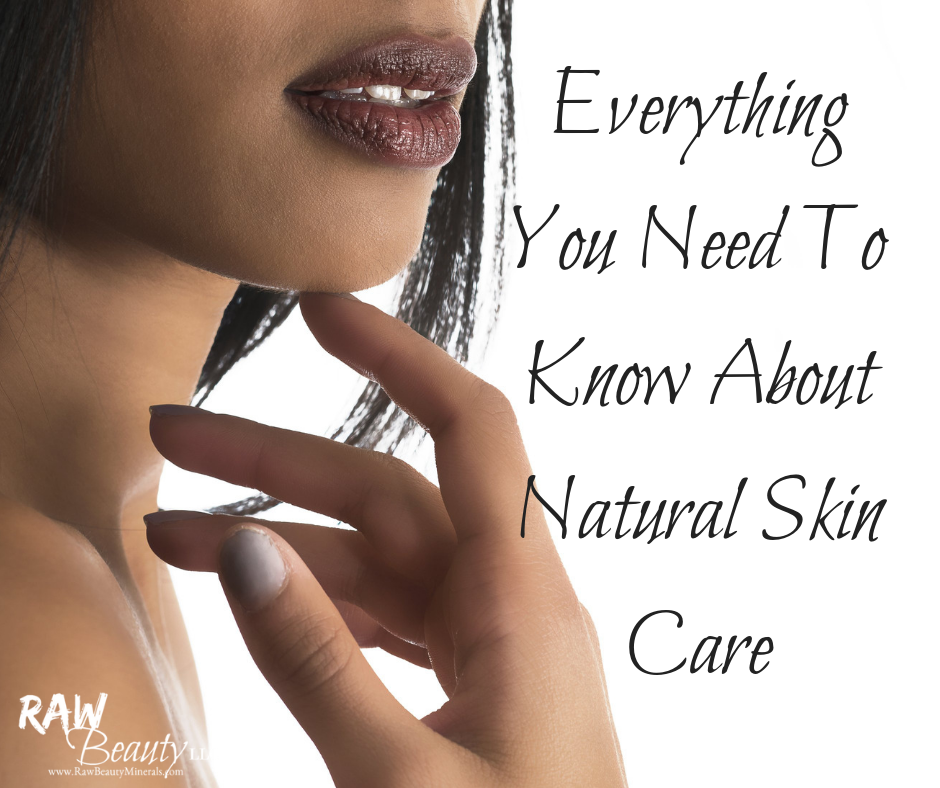
Everything you need to know about natural skin care.
All the different products you slather on to your skin during your morning routine, your afternoon touch up, and your nightly skin ritual get absorbed into your skin every single day.
Quite a few of the ingredients that your skin comes into contact with are safe in small amounts. However, the reality is that oftentimes we wear a lot more products than we should be putting on our skin. A small pea-sized drop here and there does add up. There are so many chemical combinations that have yet to be tested, and plenty may be worse for you than you think.
9 out of 10 of all the different makeup and skin care ingredients have yet to be properly studied by the Cosmetic Ingredient Review, the FDA, or any of the other reputable research bodies. There may not be people dropping dead after a swipe of lipstick - of course, manufacturers don’t want to endanger their customers.
However, the exposure over time could have unpleasant side effects, and it’s always better to be safe than sorry while these ingredients are being tested. There are tons of ingredients that are banned in the EU due to their dangerous side effects. However, only ten are banned in the United States.
As you read on, you’ll learn more about natural makeup and skin care and why you should choose these products rather than their chemical-laden counterparts.

How can I switch to a natural beauty routine?
Simplify your routine
Chances are you don’t need half the products that are cluttering your makeup shelf. There is no cream that is able to completely eliminate those dark circles and no serum that will reverse your wrinkles. Honestly, the only essentials that you really need is probably a cleanser, a serium, a moisturizer, and a good sunscreen. Don’t waste your hard-earned money on products that won’t deliver what it says it will. Stick to the basics, and your skin and wallet will thank you.
Remember that “natural” doesn’t always mean natural

Buzzwords are thrown around all the time, so it’s important for you to do your research to ensure that it means what it really means. Rather than just looking for the word “natural,” look at the ingredients. Another great tool is the Environmental Working Group’s Skin Deep Cosmetics Database website. Here, you can look up popular cosmetic brands and products that are rated 0-10 depending on how toxic they are.
Choose unscented products
The regulatory bodies controlling makeup and skincare labels don’t require manufacturers to state what exactly goes into a product’s fragrance. This means that really, there could be anything in there. Choose fragrance-free products so you don’t have to put your body at risk of taking in dangerous substances.

Opt for recycled packaging
Glass is undoubtedly the best packaging for your products. It can be recycled and won’t leak any toxins out into the environment. Polyethylene terephthalate (PET) plastic may be the next best, followed by high-density polyethylene (HDPE). It’s better to opt out of polycarbonate, but polypropylene is a possible alternative.
Any item with recycling code #3 should be avoided, as should anything with the letter “v.” This is because such plastics are often poisonous and are some of the worst plastics to recycle. They leak toxins to air, water, and land, and can cause quite a bit of damage.

Assess what a brand stands for
There’s a lot more to a brand than the products that it sells. It’s always a good idea to find out the values that they stand for. You can do this from the comfort of your own home by simply looking them up online. What is their mission and vision statements? What do they promise their customers? Are they cruelty-free? Where do they source their ingredients? Is being a sustainable company important to them? These are all things that can make a difference in your decision of whether or not you should purchase from a brand.
Go organic
It isn’t just your produce that you can buy organic. Your skincare, makeup, and grooming products can also be organic. This means that its components are grown without fertilizers or pesticides, resulting in a healthier product for both you and for the environment. Look for products that carry a USDA organic seal, and even a Demeter U.S.A. stamp of approval to be sure that the ones that you are choosing contain raw ingredients grown with safe, sustainable farming methods.
Pass on the petrochemicals
Petroleum byproducts are often used by drugstore brands as emollients. They can be very dangerous for you because many of them are considered carcinogens. They are unsustainable, bad for the environment, and terrible for your skin. Avoid it at all costs.

Brush up on your DIY skills
Did you know that you can make a lot of your own skincare products? Raw face masks are amazing, and rather than buying them at Lush, you can mix your own just by mixing some yogurt and honey. A great toner can be made out of vegetables, and you can even add green tea for a pimple-fighting effect. You can even make an exfoliating scrub out of lime, honey, and sugar! This is also fun to do with friends, so why not stay in and make some lip scrubs rather than going shopping?
Start from the inside
For a gorgeous look, it’s important to start with a good foundation. No, not the product - your skin itself. Exercise regularly so that your sweat cleans out your pores and flushes out those toxins. Make sure you drink more than enough water and eat plenty of fruits and vegetables so that your skin replenishes itself. It’s a lot cheaper and less stressful than buying mask after healing mask. Eat enough protein and omega-3, and don’t forget your vitamins!
Natural Skin Care

